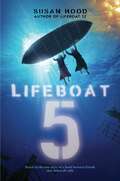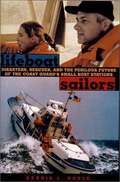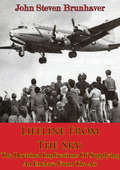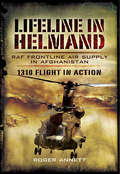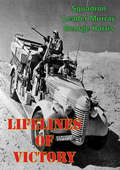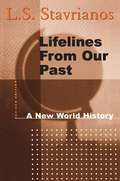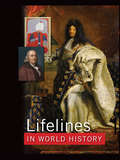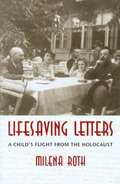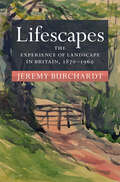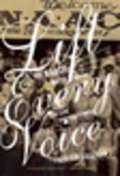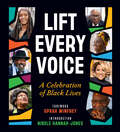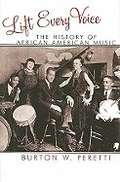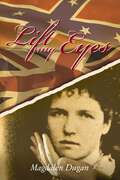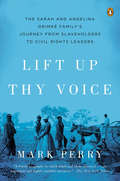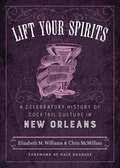- Table View
- List View
Lifeboat
by James White[from the back cover:] "Disaster! The passengers were the usual varied lot, some nervous, some boisterous, some smart-aleck, some quiet. The ship's Medical Officer was brand new and didn't anticipate having to do much more than take care of a few queasy stomachs and bruises among his charges--from learning how to handle weightlessness. It was a routine trip. And so was the safety drill. Until the disaster call went out... " If you enjoyed this suspenseful novel about humanity's adjusting to life beyond earth in the future you'll enjoy the many more books by James White in the Bookshare collection.
Lifeboat 12
by Susan HoodIn the tradition of The War That Saved My Life and Stella By Starlight, this poignant novel in verse based on true events tells the story of a boy’s harrowing experience on a lifeboat after surviving a torpedo attack during World War II. <P><P>With Nazis bombing London every night, it’s time for thirteen-year-old Ken to escape. He suspects his stepmother is glad to see him go, but his dad says he’s one of the lucky ones—one of ninety boys and girls to ship out aboard the SS City of Benares to safety in Canada. <P><P>Life aboard the luxury ship is grand—nine-course meals, new friends, and a life far from the bombs, rations, and his stepmum’s glare. <P><P>And after five days at sea, the ship’s officers announce that they’re out of danger. They’re wrong. Late that night, an explosion hurls Ken from his bunk. They’ve been hit. Torpedoed! <P><P>The Benares is sinking fast. Terrified, Ken scrambles aboard Lifeboat 12 with five other boys. Will they get away? Will they survive? <P><P> Award-winning author Susan Hood brings this little-known World War II story to life in a riveting novel of courage, hope, and compassion. Based on true events and real people, Lifeboat 12 is about believing in one another, knowing that only by banding together will we have any chance to survive.
Lifeboat 5
by Susan Hood&“A captivating…thrilling adventure story that shows the power of friendship, hope, and forgiveness.&” —Lauren Tarshis, author of the I Survived series In the wake of Lifeboat 12 comes a &“gripping, harrowing&” (Publishers Weekly) World War II novel-in-verse by acclaimed author Susan Hood about two very real girls who clung together for dear life when their evacuee ship was torpedoed, their lifeboat capsized, and they spent nineteen hours in the Atlantic Ocean, waiting for rescue.When Nazi bombs begin to destroy Bess Walder&’s hometown of East London, Bess convinces her parents to evacuate her and her younger brother, Louis, to Canada aboard the SS City of Benares. On the journey, she meets another evacuee, Beth Cummings. Bess and Beth have a lot in common—both strong and athletic, both named for Queen Elizabeth, both among the older kids on the ship, and both excited about life in Canada. On the fifth day at sea, everyone starts to relax, but trouble is right behind them. That night, a Nazi U-boat torpedoes the Benares. As their luxury liner starts to sink, Bess and Beth rush to abandon ship aboard their assigned lifeboat. Based on true events and real people, Lifeboat 5 is about two young girls with the courage to persevere against the odds and the strength to forgive.
Lifeboat Sailors: Inside the U.S. Coast Guard's Small Boat Stations
by Dennis L. NobleWritten by a former Coast Guard senior chief, this volume explores the state of the Coast Guard's small boat rescue crews. He tells the stories of a number of rescues. He also explores the bureaucratic structure of the service and recounts complaints of station personnel that the command structure is unresponsive to the needs of the average Coast Guardsman. The Library of Congress cataloging cites the subtitle as "inside the U. S. Coast Guard's small boat stations.
Lifeboatmen
by Simon WillsThe worst hurricane for over a century devastated the south coast of England in 1866, during a period when emergency services were in their infancy.In the town of Poole, Dorset, the newly appointed lifeboat is launched to aid the numerous stricken ships in the vicinity but unaccountably fails to save any lives. Many sailors are drowned as a result. In an era when gallantry and self-sacrifice were expected, the lifeboatmen are publicly accused of cowardice by local dignitaries creating a serious rift in a close-knit community.It is in this atmosphere of suspicion and blame that lifeboat coxswain Richard Stokes finds himself, tasked with overcoming a prevailing sense of pessimism and creating a viable team which will be ready for the next maritime emergency. By recognising the weaknesses that lie within both his crew and himself, he endeavours to take the sometimes painful steps to put things right. In a divided community battered by the rages of the sea, relationships and loyalties are tested in dramatic style.When another opportunity eventually presents itself for the lifeboatmen to test their mettle, they are prepared to put all their plans into action and present a courageous front. In violent seas, they are called to a treacherously unstable wreck with forty-six men trapped on board. Will the coxswain and his men be able to save all souls on board and redeem past mistakes, or will this be yet another opportunity for the community to blast their efforts and deem their services dangerously insufficient?This fast paced true story provides an authentic and enthralling evocation of a nineteenth century seafaring community on the brink of great change.As featured on BBC Radio Solent and in the Bournemouth Echo
Lifeline Across the Sea: Mercy Ships of the Second World War and their Repatriation Missions
by David L. WilliamsBehind the scenes during the Second World War, agreements were negotiated for the safe exchange and repatriation of wounded or gravely ill prisoners, ‘Protected Personnel’, diplomats, civilians and alien internees, a little-known dimension of the war. Conducted under the oversight of the International Red Cross and through neutral intermediaries, exchanges were arranged individually between Allied nations and the Axis belligerents. A group of some 50 ships, many in special livery, were uniquely engaged in this highly dangerous work, sailing through hostile waters alone and undefended, and conspicuously illuminated at night. Constantly at risk of attack by submarine and aircraft, their safety depended on the transmission, receipt and observance of ‘safe passage’ commands to the armed units in their paths. This book describes these special ships and details the exchange missions they took part in.
Lifeline From The Sky: The Doctrinal Implications Of Supplying An Enclave From The Air
by John Steven BrunhaverThis paper seeks to answer the following question: What are the doctrinal imperatives of providing effective airlift support to enclaves? Doctrinal imperatives are those necessary and sufficient propositions that describe the optimal way to employ airlift forces in support of an enclave. In short, this paper attempts to determine the best way to conduct airlift operations to support enclaves.The primary conclusion of this paper is that four fundamental factors influence airlift operations: requirement to capability ratio, threat, support infrastructure, and weather. The second conclusion is that there are two basic methods to employ airlift forces: continuous flow and surge methods. The additional doctrinal imperatives contained in the conclusion relate to the interactions among the four factors affecting airlift operations to support enclaves and the ways in which they influence the two employment methods.Evidence used to derive the doctrinal propositions came from the Luftwaffe's attempt to resupply the German Sixth Army at Stalingrad from the air, the Berlin Airlift, and the airlift to the Khe Sanh garrison in the Vietnam War.
Lifeline in Helmand: 1310 Flight in Action
by Roger AnnettAfghanistan is the theater where 1310 Flights role is to provide the heavy-lift support helicopter element within the British Forces Joint Helicopter Command. Its Headquarters are at Wilton because the unit reports to British Land Forces HQ, meaning that the Operational Command of its RAF personnel lies with the Army. RAF Odiham in Hampshire offers the Flight the largest fleet of Chinooks outside the US Army. Currently, eight of those machines are detached to Afghanistan at any one time, within the International Security Assistance Force. This book explains how 1310 Flight practice and prepare the replacement crews for their tour in Helmand, the most difficult combat zone experienced by the British since World War II. It also contains firsthand accounts and photographs of operational experience during a tour in the battle zone.
Lifelines Of Victory
by Squadron Leader Murray George Harris“Amateurs study tactics,” goes an old saying, “armchair generals study strategy, but professionals study logistics” and Squadron Leader Murray Harris heartily believed in it. In this book he surveys the early actions of the Second World War so as to demonstrate and prove his point, focusing on the transportation of troops, supplies, oil and ammunition he traces the emerging patterns that would dominate the entire period.
Lifelines from Our Past
by L. S. StavrianosThis book offers an extraordinary interpretation of world history, from the paleolithic era to the present. Renowned historian L.S. Stavrianos conceptualizes human history into three categories: kinship societies, tributary societies, and capitalist societies. In each, he discerns and studies four "life-line" issues - ecology, gender relations, social relations, and war - that encompass the broadest areas of human experience. The revised edition projects forward to the twenty-first century, offering the author's views on possible future scenarios involving the same lifeline issues.
Lifelines in World History: The Ancient World, The Medieval World, The Early Modern World, The Modern World
by Ase Berit Rolf StrandskogenThis lavishly illustrated full-color set is organized by the time frames that mirror the National Standards for world history for grades 6-12. An ideal supplement to all the major textbooks, it offers appealing and comprehensive biographies of history's most influential figures - both famous and infamous."Lifelines in World History" features biographies of figures from Africa, the Americas, Asia and the Pacific, Europe, and Southwest Asia, and covers the most significant events and trends in world history. Each volume includes 15-20 biographies, and in addition to biographical information, each entry includes engaging sidebars that feature key dates, more people to know, words from their time, and cultural connections. The set also includes numerous full-color maps.
Lifelines of Our Society: A Global History of Infrastructure (Infrastructures)
by Dirk van LaakA comprehensive history and examination of global infrastructures and the outsized role they play in our lives.Infrastructure is essential to defining how the public functions, yet there is little public knowledge regarding why and how it became today&’s strongest global force over government and individual lives. Who should build and maintain infrastructures? How are they to be protected? And why are they all in such bad shape? In Lifelines of Our Society, Dirk van Laak offers broad audiences a history of global infrastructures—focused on Western societies, over the past two hundred years—that considers all their many paradoxes. He illustrates three aspects of infrastructure: their development, their influence on nation building and colonialism, and finally, how individuals internalize infrastructure and increasingly become not only its user but regulator.Beginning with public works, infrastructure in the nineteenth century carried the hope that it would facilitate world peace. Van Laak shows how, instead, it transformed to promote consumerism&’s individual freedoms and our notions of work, leisure, and fulfillment. Lifelines of Our Society reveals how today&’s infrastructure is both a source and a reflection of concentrated power and economic growth, which takes the form of cities under permanent construction. Symbols of power, van Laak describes, come with vulnerability, and this book illustrates the dual nature of infrastructure&’s potential to hold nostalgia and inspire fear, to ease movement and govern ideas, and to bring independence to the nuclear family and control governments of the Global South.
Lifesavers and Body Snatchers: Medical Care and the Struggle for Survival in the Great War
by Tim CookFrom Canada&’s top war historian, a definitive medical history of the Great War, illuminating how the carnage of modern battle gave birth to revolutionary life-saving innovations. It brings to light shocking revelations of the ways the brutality of combat and the necessity of agonizing battlefield decisions led to unimaginable strain for men and women of medicine who fought to save the lives of soldiers.Medical care in almost all armies, and especially in the Canadian medical services, was sophisticated and constantly evolving, with vastly more wounded soldiers saved than lost. Doctors and surgeons prevented disease from decimating armies, confronted ghastly wounds from chemical weapons, remade shattered bodies, and struggled to ease soldiers&’ battle-haunted minds. After the war, the hard lessons learned by doctors and nurses were brought back to Canada. A new Department of Health created guidelines in the aftermath of the 1918-19 flu pandemic, which had killed 55,000 Canadians and millions around the world. In a grim irony, the fight to improve civilian health was furthered by the most destructive war up to that point in human history. But medical advances were not the only thing brought back from Europe: Lifesavers and Body Snatchers exposes the disturbing story of the harvesting of human body parts in medical units behind the lines. Tim Cook has spent over a decade investigating the history of Canadian medical doctors removing the body parts of slain Canadian soldiers and transporting their brains, lungs, bones, and other organs to the Royal College of Surgeons (RCS) in London, England. Almost 800 individual body parts were removed from dead soldiers and sent to London, where they were stored, treated, and some presented in exhibition galleries. After being exhibited there, the body parts were displayed in Canada. This uncovered history is a shockingly revelation never told before and part of the hidden legacy of the medical war. Based on deep archival research and unpublished letters of soldiers and medical personnel, Lifesavers and Body Snatchers is a powerful narrative, told in Cook&’s literary style, which reveals how the medical services supported the soldiers at the front and forged a profound legacy in shaping Canadian public health in the decades that followed.
Lifesaving Letters: A Child's Flight From The Holocaust
by Milena RothIn 1939, in the shadow of Hitler's occupation of Czechoslovakia, six-year-old Milena Roth was sent away from her home and her loving parents and taken to safety by what came to be known as the Kinder-transport, which rescued ten thousand Jewish children from the Holocaust and placed them with guardians in England. When she boarded the train in Prague, expecting to be reunited soon with her parents, Milena was aware of the danger and terror that surrounded her: "I knew I would die if I didn't go." At the end of her long journey she found a xenophobic, racist society, "an anti-Semitic country in an anti-Semitic world." Milena settled into the household of her mother's English friend from the Girl Guides, who had agreed to take Milena in and who planned to bring her parents to England as well. She spent six uncertain years waiting for her parents and enduring her foster mother's complex ambivalence. Milena learned only after the war that her parents were deported from Czechoslovakia in July 1943 and died at Auschwitz. Whatever the faults of Milena's guardian, she had been genuinely fond of Milena's mother and preserved her old friend's letters. These she gave to Milena, and they form the heart of this book. The first letter dates from 1930; the last, written less than a year before Milena's parents were captured and murdered, is heavy with "an air of despairing farewell," an understanding that escape was no longer possible. As an adult, Milena Roth spent many years piecing together the fate of her family and making sense of her life. In this book, drawing on her mother's poignant letters and on her own memories and experiences, she recounts the challenges of integrating, in adulthood, the wounds and bereavements of childhood and of "regaining the confidence of my place in the universe that had been lost."
Lifescapes: The Experience of Landscape in Britain, 1870–1960 (Modern British Histories)
by Jeremy BurchardtWhy does landscape matter to us? We rarely articulate the often highly individual ways it can do so. Drawing on eight remarkable unpublished diaries, Jeremy Burchardt demonstrates that responses to landscape in modern Britain were powerfully affected by personal circumstances, especially those experienced in childhood and youth. Four major patterns are identified: 'Adherers' valued landscape for its continuity, 'Withdrawers' for the refuge it provides from perceived threats, 'Restorers' for its sustaining of core value systems, and 'Explorers' for its opportunities for self-discovery and development. Lifescapes sets out a new approach to landscape history based on comparative biography and deep contextualization, which has far-reaching implications. It foregrounds family structures and relationships and the psychological dynamics they generate. These, it is argued, were usually a more decisive presence in landscape encounters than wider cultural patterns and forces. Seen in this way, landscape can be understood as a mirror reflecting our innermost selves and the psychosocial influences shaping our development. This is a compelling and original study of the relationship between individual lives and landscapes.
Lifestyle and Medicine in the Enlightenment: The Six Non-Naturals in the Long Eighteenth Century (Routledge Studies in the History of Science, Technology and Medicine)
by James Kennaway Rina KnoeffThe biggest challenges in public health today are often related to attitudes, diet and exercise. In many ways, this marks a return to the state of medicine in the eighteenth century, when ideals of healthy living were a much more central part of the European consciousness than they have become since the advent of modern clinical medicine. Enlightenment advice on healthy lifestyle was often still discussed in terms of the six non-naturals – airs and places, food and drink, exercise, excretion and retention, and sleep and emotions. This volume examines what it meant to live healthily in the Enlightenment in the context of those non-naturals, showing both the profound continuities from Antiquity and the impact of newer conceptions of the body.
Lift Every Voice
by Patricia SullivanA "civil rights Hall of Fame" (Kirkus) that was published to remarkable praise in conjunction with the NAACP's Centennial Celebration, Lift Every Voice is a momentous history of the struggle for civil rights told through the stories of men and women who fought inescapable racial barriers in the North as well as the South-keeping the promise of democracy alive from the earliest days of the twentieth century to the triumphs of the 1950s and 1960s.Historian Patricia Sullivan unearths the little-known early decades of the NAACP's activism, telling startling stories of personal bravery, legal brilliance, and political maneuvering by the likes of W.E.B. Du Bois, Mary White Ovington, Walter White, Charles Houston, Ella Baker, Thurgood Marshall, and Roy Wilkins. In the critical post-war era, following a string of legal victories culminating in Brown v. Board, the NAACP knocked out the legal underpinnings of the segregation system and set the stage for the final assault on Jim Crow.A sweeping and dramatic story woven deep into the fabric of American history-"history that helped shape America's consciousness, if not its soul" (Booklist) - Lift Every Voice offers a timeless lesson on how people, without access to the traditional levers of power, can create change under seemingly impossible odds.
Lift Every Voice: A Celebration of Black Lives
by Oprah Winfrey Nikole Hannah-Jones&“When we lift every voice, we forge a deep and enduring connection to the past—and carve a tunnel of hope to a brighter future for us all.&” -Oprah Winfrey &“This book, above all else, is a reminder of where we have been and the debt we owe to those who came before. These Americans have not passed the torch, but are clasping it with us, urging us to continue the work alongside them,&”-Nikole Hannah-Jones More than 50 elders share their remarkable experiences of being Black in America in a collection of powerful photographs and interviews For so long, too many stories that reveal what it means and feels like to be Black in America have been overlooked outside Black communities. After these long years of racial reckonings and nascent awakenings, Lift Every Voice presents interviews with the oldest generation of Black Americans about their lives, their experiences, and the wisdom that can carry all of us to a better future. The 54 fascinating individuals—civil rights activists, hometown heroes, celebrities, and many others—include: • Andre de Shields, an actor, director, and choreographer who discusses the essential values and lessons his parents taught him • Clarice Freeman, an educator and community leader in Houston, Texas who speaks about how to live a long and fulfilling life • Fred Gray, a civil rights lawyer who represented Rosa Parks and Claudette Colvin, also featured in the book, against disorderly conduct charges for their refusal to give up their bus seats to white passengers • Patti LaBelle a singer/songwriter who shares her thoughts on aging and her career as an internationally celebrated powerhouse singer • Faye Wattleton, a reproductive rights activist and the first African American and youngest president of Planned Parenthood who recounts her experience as a nurse and midwife in the 1960s The insightful interviews were conducted by a brilliant team, many of whom are rising Black journalists from historically Black colleges and universities, and the portraits were shot by a talented group of next generation Black photographers. Lift Every Voice is named after the James Weldon Johnson poem and hymn "Lift Every Voice and Sing," which is often referred to as the "Black national anthem." Lift Every Voice is both a testament to the strength of the elders&’ stories and a triumphant beginning for a new generation of Black journalists and photographers.
Lift Every Voice: The History of African American Music
by Burton W. PerettiSince their enslavement in West Africa and transport to plantations of the New World, black people have made music that has been deeply entwined with their religious, community, and individual identities. Music was one of the most important constant elements of African American culture in the centuries-long journey from slavery to freedom. It also continued to play this role in blacks' post-emancipation odyssey from second-class citizenship to full equality. Lift Every Voice traces the roots of black music in Africa and slavery and its evolution in the United States from the end of slavery to the present day. The music's creators, consumers, and distributors are all part of the story. Musical genres such as spirituals, ragtime, the blues, jazz, gospel, rhythm and blues, rock, soul, and hip-hop-as well as black contributions to classical, country, and other American music forms-depict the continuities and innovations that mark both the music and the history of African Americans. A rich selection of documents help to define the place of music within African American communities and the nation as a whole.
Lift My Eyes
by Magdalen DuganLift My Eyes fictionally portrays the life of celebrated feminist painter Matilda Lotz. The daughter of a faithful Christian family of German immigrants, Matilda is only six when she is caught up in the bloody Battle of Franklin, only ten when she and her family are pursued by the Ku Klux Klan and forced to flee from Tennessee to California. Like Joseph sold into slavery in Egypt, no adversity can crush her. The talented young artist becomes the protégé first of Penelope Hearst and later of French feminist painter Rosa Bonheur. No typical Victorian woman, she overcomes both sexism and self-doubt to paint dukes in England, counts in Hungary, and Bedouins in North Africa. She refuses to marry until fifty-five, when she falls in love with another painter, a Hungarian nobleman. But when a second war, the Great War, strips her of nearly everything, Matilda is challenged to one final battle – with her own heart.
Lift Up Thy Voice
by Mark PerryIn the late 1820s Sarah and Angelina Grimké traded their elite position as daughters of a prominent white slaveholding family in Charleston, South Carolina, for a life dedicated to abolitionism and advocacy of women's rights in the North. After the Civil War, discovering that their late brother had had children with one of his slaves, the Grimké sisters helped to educate their nephews and gave them the means to start a new life in postbellum America. The nephews, Archibald and Francis, went on to become well-known African American activists in the burgeoning civil rights movement and the founding of the NAACP. Spanning 150 eventful years, this is an inspiring tale of a remarkable family that transformed itself and America.
Lift Up Your Voice Like a Trumpet: White Clergy and the Civil Rights and Antiwar Movements, 1954-1973
by Michael FriedlandWhen the Supreme Court declared in 1954 that segregated schools were unconstitutional, the highest echelons of American religious organizations enthusiastically supported the ruling. Many white southern clergy, however, were outspoken in their defense.
Lift Your Spirits: A Celebratory History of Cocktail Culture in New Orleans (The Southern Table)
by Elizabeth M. Williams Chris McmillianThe Sazerac, the Hurricane, and the absinthe glass of Herbsaint are among the many well-known creations native to New Orleans's longstanding drinking culture. But more than vehicles for alcohol, the cocktails and spirits that complement the city's culinary prowess are each a token of its history. In every bar-side toast or street-corner daiquiri you can find evidence of the people, politics, and convergence of ethnicities that drive the story of the Crescent City.In Lift Your Spirits: A Celebratory History of Cocktail Culture in New Orleans, Elizabeth M. Williams, founder and director of the Southern Food and Beverage Institute, and world-renowned bartender Chris McMillian illuminate the city's open embrace of alcohol, both in religious and secular life, while delving into the myths, traditions, and personalities that have made New Orleans a destination for imbibing tourists and a mecca for mixologists.With over 40 cocktail recipes interspersed among nearly three hundred years of history, a sampling of premier cocktail bars in New Orleans, and a glossary of terms to aid drink making and mixing, Lift Your Spirits honors the art of a good drink in the city of good times.
Lift: Fitness Culture, from Naked Greeks and Acrobats to Jazzercise and Ninja Warriors
by Daniel KunitzA fascinating cultural history of fitness, from Greek antiquity to the era of the “big-box gym” and beyond, exploring the ways in which human exercise has changed over time—and what we can learn from our ancestors.We humans have been conditioning our bodies for more than 2,500 years, yet it’s only recently that treadmills and weight machines have become the gold standard of fitness. For all this new technology, are we really healthier, stronger, and more flexible than our ancestors?Where Born to Run began with an aching foot, Lift begins with a broken gym system—one founded on high-tech machinery and isolation techniques that aren’t necessarily as productive as we think. Looking to the past for context, Daniel Kunitz crafts an insightful cultural history of the human drive for exercise, concluding that we need to get back to basics to be truly healthy.Lift takes us on an enlightening tour through time, beginning with the ancient Greeks, who made a cult of the human body—the word gymnasium derives from the Greek word for “naked”—and following Roman legions, medieval knights, Persian pahlevans, and eighteenth-century German gymnasts. Kunitz discovers the seeds of the modern gym in nineteenth-century Paris, where weight lifting machines were first employed, and takes us all the way up to the game-changer: the feminist movement of the 1960s, which popularized aerobics and calisthenics classes. This ignited the first true global fitness revolution, and Kunitz explores how it brought us to where we are today.Once a fast-food inhaler and substance abuser, Kunitz reveals his own decade-long journey to becoming ultra-fit using ancient principals of strengthening and conditioning. With Lift, he argues that, as a culture, we are finally returning to this natural ideal—and that it’s to our great benefit to do so.
Lifted: A Cultural History of the Elevator
by Andreas BernardBefore skyscrapers forever transformed the landscape of the modern metropolis, the conveyance that made them possible had to be created. Invented in New York in the 1850s, the elevator became an urban fact of life on both sides of the Atlantic by the early twentieth century. While it may at first glance seem a modest innovation, it had wide-ranging effects, from fundamentally restructuring building design to reinforcing social class hierarchies by moving luxury apartments to upper levels, previously the domain of the lower classes. The cramped elevator cabin itself served as a reflection of life in modern growing cities, as a space of simultaneous intimacy and anonymity, constantly in motion. In this elegant and fascinating book, Andreas Bernard explores how the appearance of this new element changed notions of verticality and urban space. Transforming such landmarks as the Waldorf-Astoria and Ritz Tower in New York, he traces how the elevator quickly took hold in large American cities while gaining much slower acceptance in European cities like Paris and Berlin. Combining technological and architectural history with the literary and cinematic, Bernard opens up new ways of looking at the elevator--as a secular confessional when stalled between floors or as a recurring space in which couples fall in love. Rising upwards through modernity, Lifted takes the reader on a compelling ride through the history of the elevator.


